Slowly, Slowly...
For the last couple of
years I've been picking away at building a Bolger Micro.
Not that the work should take years, but I can only get
to the 'boatshop' on weekends.
The basic hull was built
without significant deviation from the plans, although
with increased scantlings. Most of the ply is 3/8"
1088 Meranti, with a bottom of 1/2" MDO. By cutting
round the knots and shakes I was able to get most of solid
lumber out of construction grade Douglas Fir.
Rather than build a 'strongback'
I assembled the hull upside down, relying on the 'instant
boat' method to keep things plumb and true. Building 'bottom
up', it made sense to finish and paint the bottom before
rolling the hull over. At that stage the boat was light;
easily picked up and rolled over on the ground with help
from a couple of friends. A simple cradle supported the
hull for for keel and deck installation.
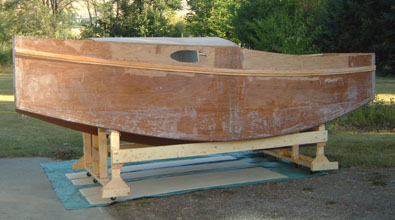
Both of the cradle's side
beams were retained with bolts which made temporary removal
simple. This allowed the lead keel weight to be slipped
into position on a simple dolly made from 'two by' lumber,
rolling on castors. Once the dolly was no longer needed,
the castors were fitted underneath the construction cradle.
Up,
up and away...
About this time last year,
or a little later, the fellow from the local lumber yard
dropped by with his crane-on-a-truck.
With 400lbs of lead hung
underneath it, the transfer of the hull from cradle to
trailer was going to require significantly more muscle.
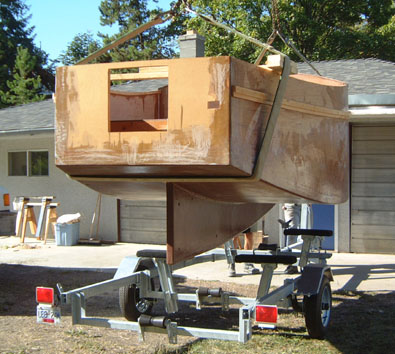
Fifteen minutes later,
the hull was sitting on its [somewhat unconventional]
trailer. A local supplier built
the trailer as a one-off based on their standard unit,
but with dropped cross members and split transverse bunks.
At that stage the stern transom was still 'to plan' with
a flat top and small motor aperture.
Once a cheap used outboard
had been obtained it was clear that the transom would
need modification....
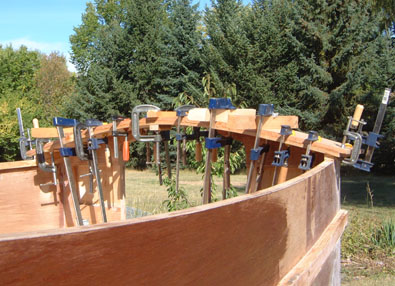
You know what they say;
you can never have too many clamps.
Although the hull is vanilla
'Micro' I decided to try the 'Chinese Gaff' rig as used
on PB&F's 'Micro
Navigator' variant. Sails were cut by Sailrite, and went together
as usual, without problems. The plans called for a Schedule
40 aluminum pipe main mast but after pricing the pipe
and checking with the designer I opted for a hollow wooden
spar, built 'birdsmouth' fashion. Clear stock for mast
building was not in the budget, so lengths of 'one by
two' were scarfed together having been cut with a simple
jig and a circular saw.
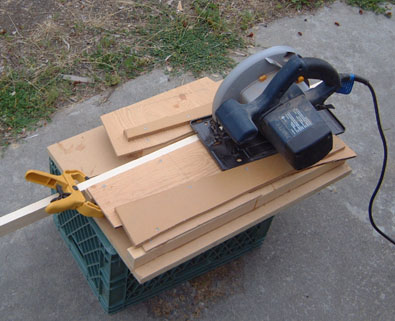
Afloat!
Work on the sailrig is
still underway, but a week or so ago I decided to make
sure that the hull would in fact float free from the trailer.
We got up early [well, early for me] to avoid the crowds
at the public launch ramp and had an uneventful test launching.
The hull floated, remained dust dry inside, and proved
easy to steer under power.
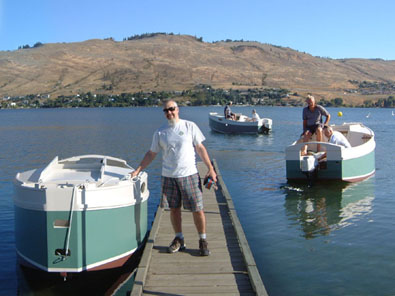
Masts, sails and spars
are nearly complete. I'm looking forward to trying the
'Navigator' sail rig before summer is over.
Derek
Waters |

